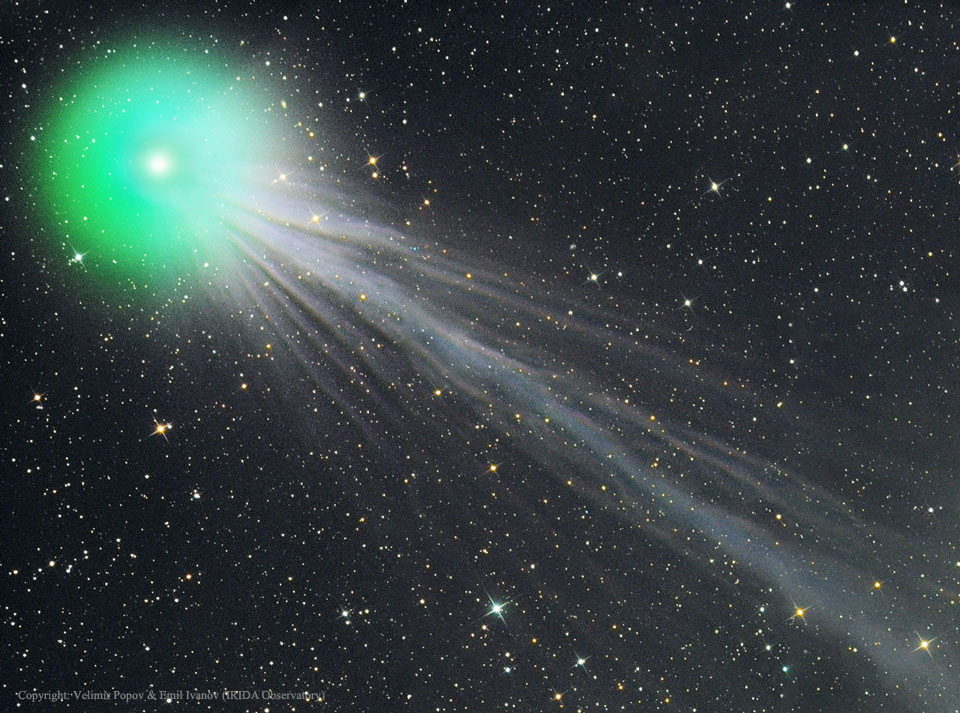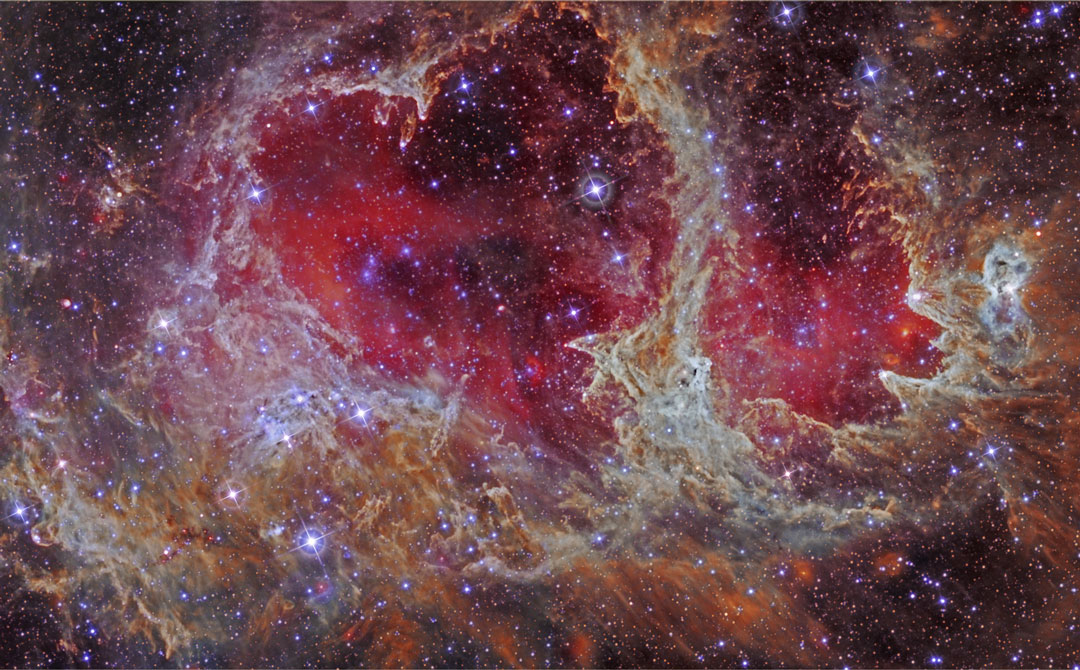The Complex Ion Tail of Comet Lovejoy: http://apod.nasa.gov/apod/ap150121.html
The comet's tail is made out of ionized gas, which is gas energized by ultraviolet light from the Sun and pushed by solar wind. The solar wind is quite complex due to the Sun's magnetic field. Structure in the ion tail can be seen to move away from the Sun following the wind. Recombining carbon monoxide molecules leads to the blue color in the comet, while the green color is created by diatomic carbon molecules. The next time Comet Lovejoy returns is in 8,000 years.
Friday, January 30, 2015
Tuesday, January 27, 2015
Observation Post
Date: January 18th, 2015
Time: 6:30-8:30 (4 Hours)
Place: Pine View School
Sky Conditions: Mostly clear, some light cloud interference
Instruments Used: Sky Map App, Mr. Percival's Telescope, Binoculars
Bright Stars noted: Polaris, Algol, Mira, Gamma Andromeda, Aldebaren, Betelgeuse, Rigel, Castor, Pollox
Constellations noted: Gemeni, Pegasus, Cassiopeia, Cepehus, Orion, Ursa Minor, Andromeda, Eridanus, Taurus
Friday, January 16, 2015
APOD 3.1
The Soap Bubble Nebula: http://apod.nasa.gov/apod/ap150113.html
A few years ago, this symmetric nebula was discovered among the constellation Cygnus. Dave Jurasevich identified it on July 6, 2008 when looking at his images of Cygnus, which included the Crescent Nebula. He notified the IAU. Only eleven days later, Mel Helm identified it as an unknown nebula too. The Soap Bubble Nebula is most likely a planetary nebula, the final phase in the life of a sun-like star. It's really neat to see a perfectly symmetrical nebula, as I have never seen one before.
Sunday, January 11, 2015
APOD 2.8
Stars and Dust in Corona Australis: http://apod.nasa.gov/apod/ap150108.html
The dust clouds seen here block light from background stars in the Milky Way. This telescopic vista is less than 500 light-years away toward the northern boundary of Corona Australis, the Southern Crown. The reflection nebulae, known as NGC 6726, 6727, and IC 4812 create a blue color as light from hot stars. I love the blue color produced from the stars and dust.
APOD 2.7
W5: Pillars of Star Formation: http://apod.nasa.gov/apod/ap141216.html
This image of W5 was taken in infrared by NASA's Wide Field Infrared Survey Explorer (WISE) satellite. The massive stars near the center are older than the stars near the edges. The older stars are probably what triggers the formation of the younger stars on the edges. This occurs when hot outflowing gas compresses cooler gas into knots dense enough to gravitationally contract into stars. This star formation is also known as the Heart and Soul Nebulas. W5 lies about 6,500 light years away towards Cassiopeia. I love how the cavity in the center looks like a heart.
Thursday, January 8, 2015
Friedrich Georg Wilhelm Struve
Friedrich Georg Wilhelm von Struve was born on April 15, 1793 in Altona, Germany to Jacob Struve and Maria Emerentia. His father was a German-Russian astronomer who inspired Friedrich to in his studies. His mother was the daughter of a local pastor. Studying at University of Dorpat, Struve studied philology at University of Dorpoat and later showed interest in astronomy. He became second in a dynasty of astronomers of over five generations by becoming a professor of astronomy and mathematics. Later, Struve superintended a project of construction for a new observatory near St. Petersberg and he later became the director of the observatory, which was named Pulkovo Observatory. The Pulkovo Observatory is still open to visitation today in St. Petersberg, Germany. Having a particular interest in double stars, Struve conducted a list in 1827 of all the known double stars observed. Struve observed double stars using a 9.5" refractor and the Dorpat meridian circle from the northern coast of Norway. He included in his monumental work: Stellarum duplicium et multiplicium mensurae micrometricae. Struve based his work off of earlier measurements of double stars observed and calculated by astronomers William Herschel and John Herschel. In 1864 Struve died of failing health at 71 years old and he was buried in St. Petersberg.
Subscribe to:
Comments (Atom)



